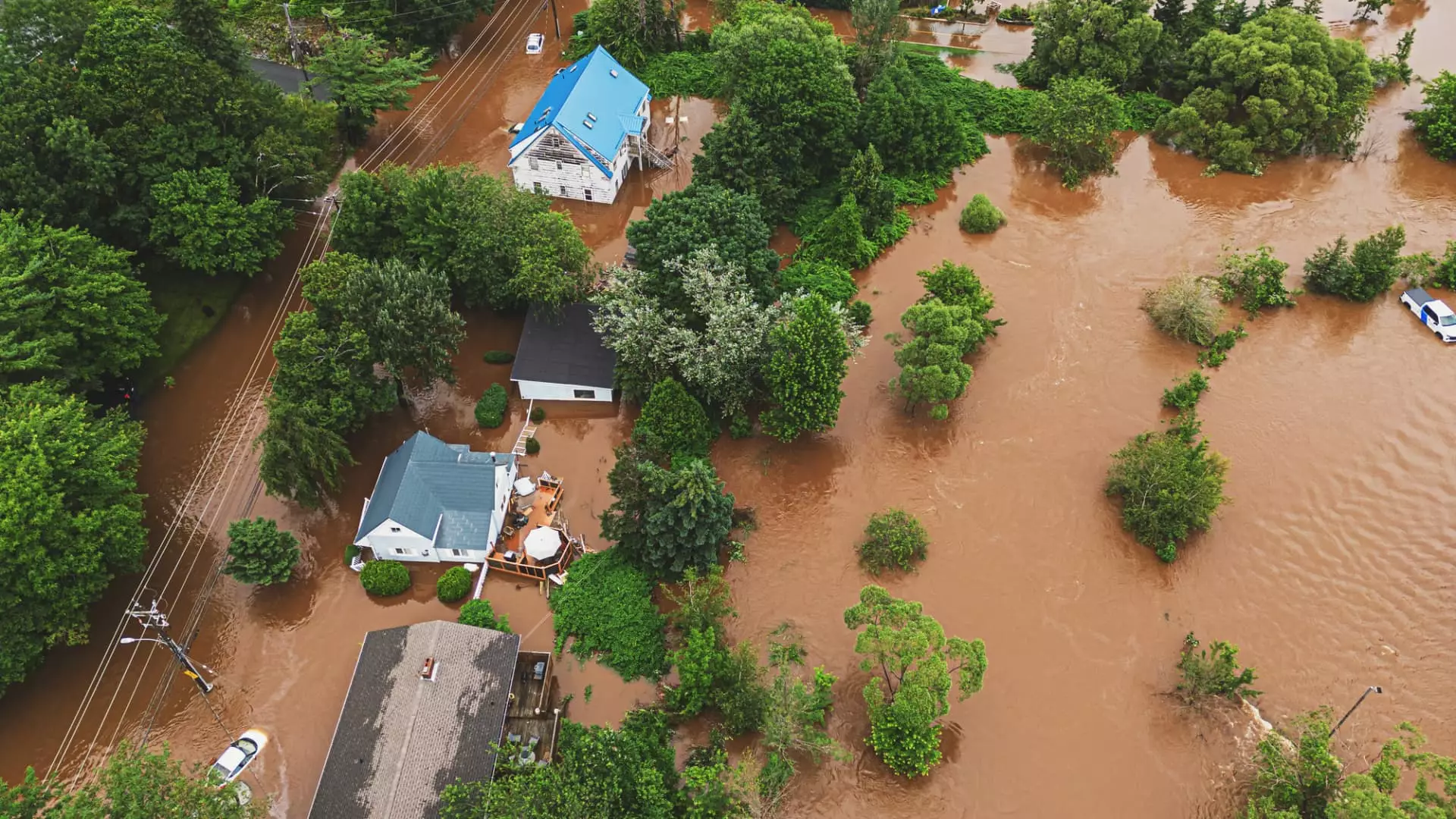For consumers in the market for a new home, the anticipation of the Federal Reserve cutting interest rates has been met with caution as another deadline approaches. By the end of September, the National Flood Insurance Program (NFIP) faces the need for reauthorization to continue issuing new policies or increasing coverage on existing ones. This looming deadline poses potential obstacles for those looking to buy or sell a home in flood-prone areas or refinance existing mortgages.
Homeowners insurance policies commonly exclude flood damage coverage, necessitating a separate flood insurance policy for those seeking protection from such risks. When buying a home, mortgage lenders may mandate the acquisition of flood insurance based on the property’s flood risk. Failure to reauthorize the NFIP could jeopardize the ability to secure a mortgage in flood zones post-September 30, as highlighted by financial policy analyst Jaret Seiberg.
Established in 1968, the NFIP has faced expiration multiple times, with brief lapses and last-minute extensions by Congress. The uncertainty surrounding the program’s reauthorization has raised concerns about potential disruptions in home sale transactions and policy renewals. Vice president of policy advocacy at the National Association of Realtors, Bryan Greene, expressed the frustration with the recurring cycle of delayed action by Congress in addressing the NFIP’s authorization.
If the NFIP fails to secure reauthorization, it will be unable to issue new policies or enhance coverage on existing ones, leading to potential delays in home sales and refinancing processes. In such scenarios, homeowners may be forced to seek coverage from private insurers, which are limited in offering flood insurance policies. The absence of NFIP coverage could impact real estate transactions, as witnessed during previous lapses in the program’s authority.
For the 4.7 million existing NFIP policyholders, the implications of a lapse in the program’s authority may not immediately disrupt their coverage. Policies in force will remain valid, and claims will continue to be processed by the NFIP during any existing lapses. However, the push for early policy renewals and proactive planning around expiration dates is advised to mitigate potential disruptions in coverage.
Critics of the NFIP have often cited concerns over subsidized insurance pricing and the program’s financial sustainability. The implementation of Risk Rating 2.0 in 2021 aimed to address pricing inaccuracies and reflect the actual cost of flood risk. However, the steep rise in premiums following the new pricing model has drawn backlash from homeowners and legislators, intensifying the debate over the program’s financial viability.
While discussions on reforming the NFIP continue, the looming reauthorization deadline underscores the program’s significance in safeguarding homeowners against flood risks. The reluctance of Congress to let the NFIP expire highlights the program’s indispensable role in providing flood insurance coverage to millions of Americans. However, the recurring challenges and financial concerns surrounding the NFIP indicate the pressing need for long-term solutions and bipartisan efforts to address the program’s shortcomings.

